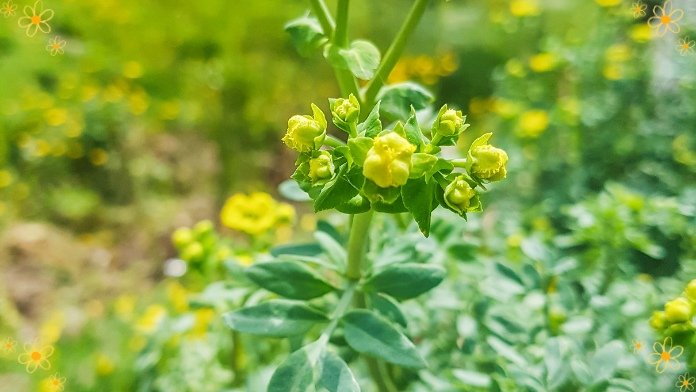
With its striking pink and green leaves, the Pink Princess Philodendron has become a must for plant lovers. The beautiful and highly sought-after Pink Princess Philodendron (Philodendron erubescens ‘Pink Princess‘) tops many plant collectors’ wish lists, and rightly so.
Caring for this beauty can be tricky if you don’t know what you’re doing. But don’t worry: this guide will explain you need about how to care for a pink princess plant.
- Botanical Name: Philodendron erubescens ‘Pink Princess’
- Common names: Pink Princess Philodendron, Blushing Philodendron
- Family: Araceae
- Types of Perennial: Plants
- Adult size: 4 to 5 feet tall, 2 to 4 feet wide
- Soil Type: Loam, moist but with good drainage.
- Soil pH: acidic
- Flowering time: spring, summer
- The flower color: green, white
- Hardness Zones: 9a, 9b, 10a, 10b, 11a, 11b
- Native area: South America
What is Pink Princess Philodendron?
Native to the rainforests of Colombia, pink princess philodendrons naturally have black and pink leaves. Although they produce a flower spadix, it is not as attractive as the leaves, which are the main attraction of this plant.
It is rare for a pink princess to bloom indoors, but its vibrant leaves provide color throughout the year as long as they are in the right conditions.
Choose the right environment
Ideal lighting conditions
Your pink princess loves bright, indirect light. Think of sunlight under a tree canopy. Too much direct sunlight can burn its delicate leaves, while too little light can cause the pink variety to fade.
Temperature and humidity requirements
This plant thrives in warm, humid environments. Aim for a temperature between 65°F and 80°F (18°C to 27°C). High humidity levels (around 60% or more) are ideal as they mimic their natural tropical habitat.
Pink Princess Philodendron Care
Native to Colombia, Pink Princess Philodendron is a tropical aroid in the Araceae family. Despite its high price, this colorful plant is easy to care for. That said, there are a few key points to keep in mind to ensure maximum leaf diversity. Pink princess philodendron plant with pink and burgundy leaves
Light
Providing adequate light to your pink princess philodendron is the most important factor affecting its amount of change. Choose a location that gets several hours of bright, indirect light.
Soil
As an aroid, pink princess philodendron enjoys airy, well-drained soil rich in organic matter. A mixture of one part standard potting soil, one part perlite, and one part orchid bark is ideal for pink princesses.
water
Allow the top half of the soil to dry out between waterings, and then water well. Generally, this means watering once a week in the spring and summer and once every 1 to 2 weeks in the fall and winter.
temperature and humidity
Pink princess philodendrons do best in warm, humid conditions, although average room temperature and humidity levels are acceptable for this hardy plant.
Ideally, keep your plant between 65 and 79 degrees Fahrenheit (18 and 26 degrees Celsius) and avoid exposing it to temperatures below 60 degrees Fahrenheit (15 degrees Celsius).
fertilizer
During their growing season (spring and summer), pink princess philodendrons benefit from regular monthly feedings with a balanced liquid fertilizer. Stop fertilizing in the early fall when your plant enters its dormant period.
Plants and containers
Choose the correct container
Choose a pot with suitable drainage holes to prevent water from sitting at the bottom. A breathable material like terracotta can protect the floor from getting wet.
The best soil mix for pink princess plants
An aerated, well-drained soil mix is essential. To create the perfect environment for your pink princess to root, you can use a mixture of peat moss, perlite, and orchid bark.
Watering
How Often to Water
Water your pink princess when the top inch of soil feels dry. It can be once a week during the growing season (spring and summer). During the dormant months (fall and winter), water less frequently.
Signs of over or underwater
Overwatering can cause root rot, as evidenced by yellowing leaves and soft stem bases. It can also cause the leaves to shrivel and turn brown at the edges.
Pruning and maintenance
Like most philodendrons, pink princesses can be easily propagated by stem cuttings. It won’t help you create a new plant to share with a friend, but propagation will help encourage a bushy plant and variety (especially if your plant’s leaves start falling back).
Here’s how you can propagate your Pink Princess Philodendron using stem cuttings in just a few simple steps:
Pruning techniques for healthy growth
Pruning helps maintain the shape of the plant and encourages new growth. Use sharp, sterile scissors to cut just above a knot.
Cleaning the Leaves
Dust can accumulate on leaves, making photosynthesis difficult. Wipe gently with a damp cloth to keep them clean and shiny.
Methods of propagation
As with all philodendrons, you can quickly propagate Pink Princess using stem cuttings. Whether you want to expand your pink philodendron collection or gift it to a friend, here’s how:
- Prune a plant with at least 2 or 3 leaves and 2 or 3 nodes along the base of the stem.
- Allow the cut to harden for 12 to 24 hours before placing in water.
- Make sure the bottom three nodes of the stem are submerged.
Propagation by stem cuttings
Take a cutting with at least one node and some leaves. Allow to dry for a few hours before placing in water or moist soil mix for the roots.
Propagation by air layer
Choose a healthy stem and make a shortcut. Wrap the cut with moist sphagnum moss and cover with plastic wrap. When the roots develop, cut the new roots and the plant base.
Deal with common pests
Pink Princess Philodendron is susceptible to several common household pests and diseases. Common pests include mealybugs, aphids, spider mites, scale, and fungus gnats.
Common diseases include root rot caused by overwatering and rust spots resulting from a fungal infection.
Identify common pests
Watch for mites, aphids, and mealybugs. They can damage plants by sucking sap.
Organic and chemical solutions
For natural solutions, use neem oil or insecticidal soap. A chemical insecticide may be necessary for severe infestations.
Common diseases and symptoms
Root rot is a common problem, usually caused by overwatering. Leaf spot disease, which appears as brown or black spots on leaves, can also occur.
Prevention and Treatment
Ensure proper watering practices and good air circulation to prevent diseases. Treat infections with fungicides if necessary.
Seasonal Care Tips
Winter care settings
In winter, your plant’s growth will slow down. Reduce watering and make sure it is not near cold drafts.
Summer care practices
In summer, you need to water more often and increase the humidity. A gravel tray or humidifier can help.
Transplant your pink princess plant
It’s a sign that it’s time to replace it. If roots poke out of the drainage holes or the plant seems to be outgrowing its pot, it’s time to repot.
A step-by-step transplant guide
- Choose a slightly larger container.
- Carefully remove the plant from its current pot.
- Gently loosen the roots.
- Place in a new pot with fresh soil mix.
- Plenty of water.
- Improving diversity
Promote pink varieties
To maintain and enhance the pink variety, provide plenty of bright, indirect light and rotate the plant regularly to ensure even light exposure.
Avoid green returns
If your plant starts to lose its pink color, it could be due to a lack of light. Adjust lighting conditions and remove green leaves to encourage variety.
Common problem solving
yellow leaves
This can be a sign of overwatering, underwatering, or nutrient deficiency. Review your watering routine and ensure adequate fertilization.
Withering or falling off
Dryness can be caused by insufficient water while sagging can indicate overwatering. Adjust your care routine accordingly.
How much do they cost?
At its peak in 2021, a mature, fully established pink princess philodendron can fetch over $2000 (yes, you read that right).
Meanwhile, single-leaf cuttings of this sought-after plant are selling for hundreds of dollars on sites like Etsy and Facebook Marketplace. Today, this plant is much more accessible and affordable.
Where to buy a pink princess philodendron
Facebook Marketplace and plant collectors may only find a pink princess philodendron, but today, they can be found in many houseplant stores, nurseries, and more.
Stores like Home Depot regularly carry these plants (depending on your location), while Costa Farms now offers pink princess philodendrons online.
FAQ
Why is the pink princess plant so expensive?
The cost is incredibly high because these plants are not quickly grown from seed because their variety results from a mutation.
How Much Sun Does a Pink Princess Philodendron Need?
About 6-8 hours
Can I grow a pink princess plant in low light?
Although it can survive in low light, the pink variety may be less vibrant. Bright, indirect light is best.
How often should I water a pink princess?
If the soil feels dry and falls off your hands, it’s time to water. Expect to water your PPP every one to two weeks in cooler temperatures;
How can I increase the humidity of my pink princess plant?
You can use a humidifier, place a gravel tray of water under the pot, or mist the leaves regularly.
What is the best way to clean leaves?
Wipe them gently with a damp cloth. Avoid using chemicals that can damage the leaves.
RELATED POSTS
View all


